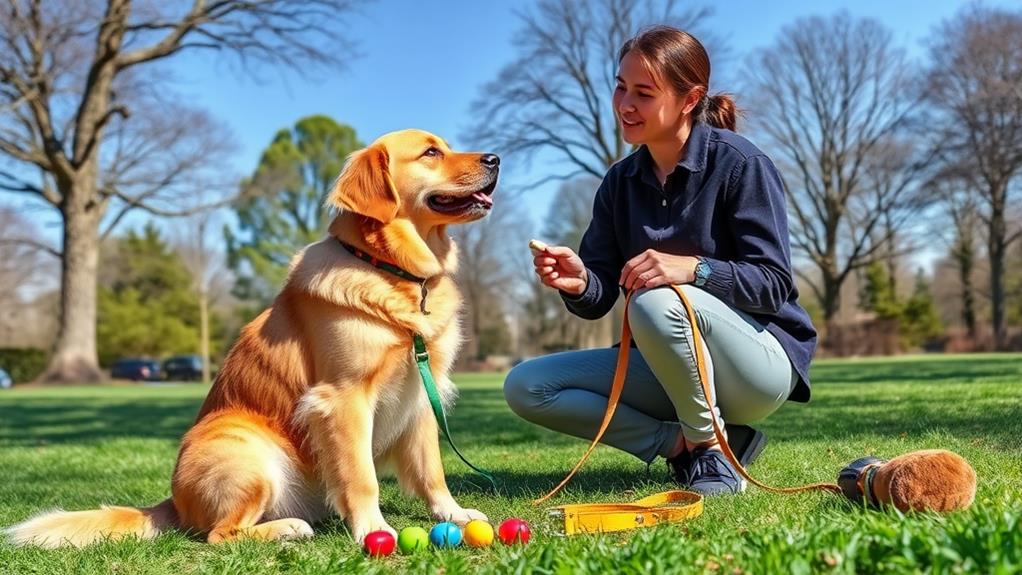To train your dog effectively, start with simple commands like "Sit" and "Stay." Keep your training sessions short, around 5-10 minutes, and consistent multiple times a day in a distraction-free environment. Use positive reinforcement—reward desirable behaviors with treats or praise immediately after. Socialize your dog by introducing them to new people and situations; this builds confidence and better behavior. In conclusion, be patient and persistent; every dog learns at their own pace. Celebrate small wins and adapt your methods as needed to strengthen your bond. There's plenty more to discover to enhance your training journey!
Use Simple Commands
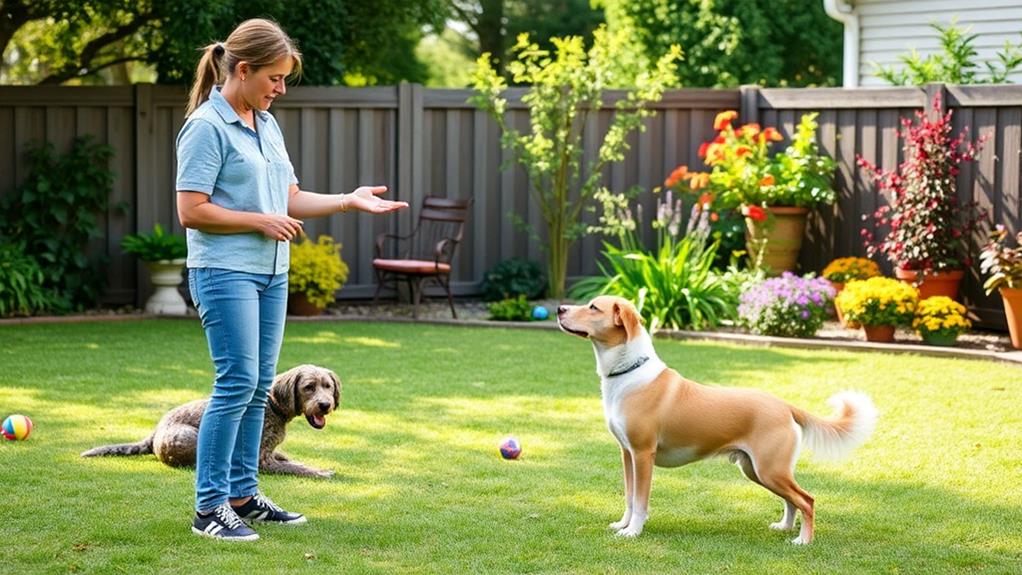
When training your dog, it's imperative to use simple commands consistently. Dogs respond better to clear and straightforward instructions, so stick to one or two words that convey your message. Instead of saying "Come here, please," just use "Come." This makes it easier for your dog to understand what you want.
Choose a few essential commands, such as "Sit," "Stay," "Down," and "Heel." Make sure you use the same word every time you give a command. This consistency helps your dog learn faster and builds a stronger connection between you two. If you mix up commands, your dog might get confused and won't know what you expect.
Also, use a firm yet friendly tone. Your dog should feel encouraged, not intimidated. Pair your commands with hand signals to enhance understanding. For example, while saying "Sit," raise your hand palm-up. This visual cue reinforces the command.
Consistent Training Sessions
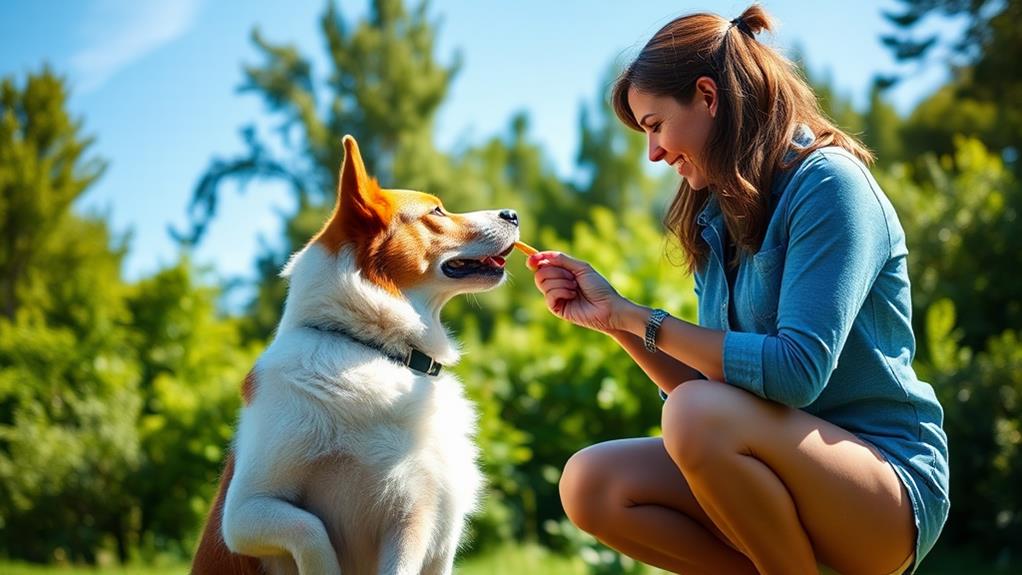
Establishing a routine for training sessions is key to your dog's learning process. Consistency helps reinforce the commands and behaviors you want your dog to learn. Schedule short training sessions, ideally 5 to 10 minutes, multiple times a day. This keeps your dog engaged without overwhelming them.
Make sure you train in a distraction-free environment. Choose a quiet spot in your home or yard where your dog can focus solely on you. During these sessions, use the same commands and gestures every time. This repetition is imperative for your dog's understanding.
Be mindful of the timing of your sessions as well. Pick times when your dog is alert and attentive, such as after a walk or playtime. Avoid training when your dog is tired or overly excited.
Positive Reinforcement Techniques
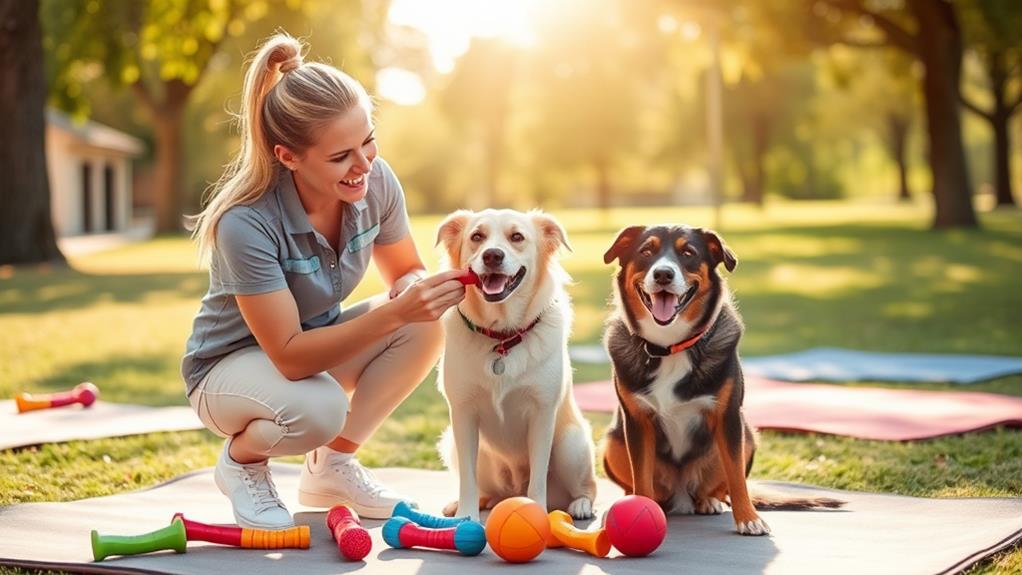
Positive reinforcement is a powerful method that motivates your dog to learn and obey commands. By rewarding your dog for desired behaviors, you create a positive association that encourages them to repeat those actions. Use treats, praise, or playtime as rewards to reinforce good behavior.
Start with simple commands like "sit" or "stay." When your dog successfully follows the command, immediately reward them. This helps your dog understand what behavior you're expecting. Timing is imperative; the reward should come right after the behavior to establish a clear connection.
Be consistent with your rewards. If your dog sits and you fail to reward them every time, they might become confused about what you expect. Use a variety of rewards to keep your dog engaged. Sometimes, a small treat works best, while other times, your enthusiastic praise might be more effective.
Avoid using punishment or negative reinforcement, as these can create fear and anxiety. Instead, focus on encouraging good behavior through positive reinforcement. This approach not only builds trust between you and your dog but also leads to a happier and more obedient pet.
Socialization for Better Behavior
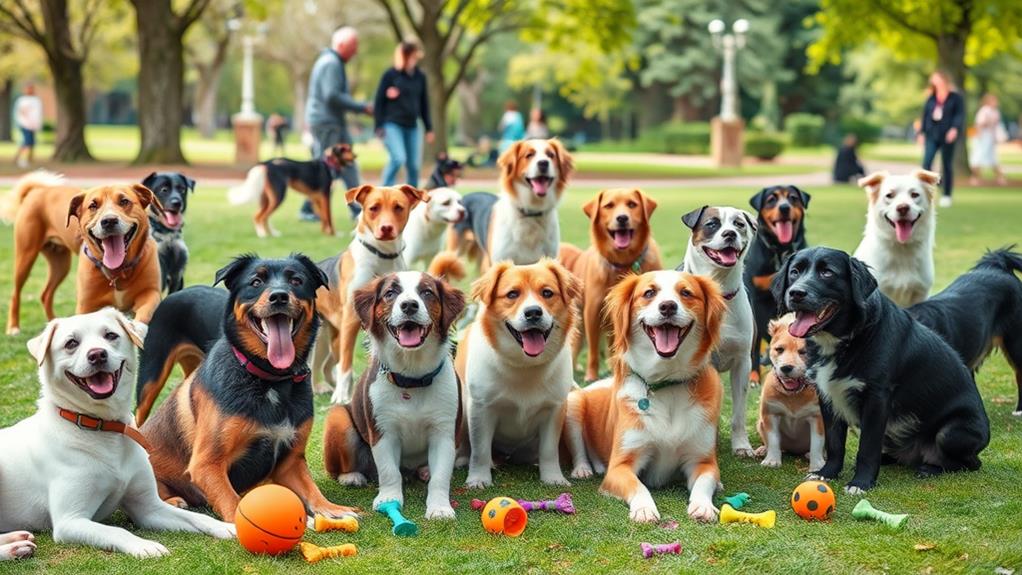
Socialization plays a key role in your dog's development and behavior. It helps your furry friend adapt to various environments, people, and other animals, reducing anxiety and fear in unfamiliar situations. When you expose your dog to different experiences from a young age, you're building their confidence and teaching them how to act appropriately.
Start by introducing your dog to various environments, like parks, busy streets, and homes with other pets. Allow your dog to meet different people, including children and elderly individuals, so they learn to be comfortable around various personalities. Make these experiences positive by using treats or praise when your dog behaves well in new situations.
Attending puppy classes or socialization groups can also be incredibly beneficial. These settings provide structured opportunities for your dog to interact with others while learning essential commands. Remember, the goal is to create positive associations with new experiences, so be patient and encouraging.
Patience and Persistence
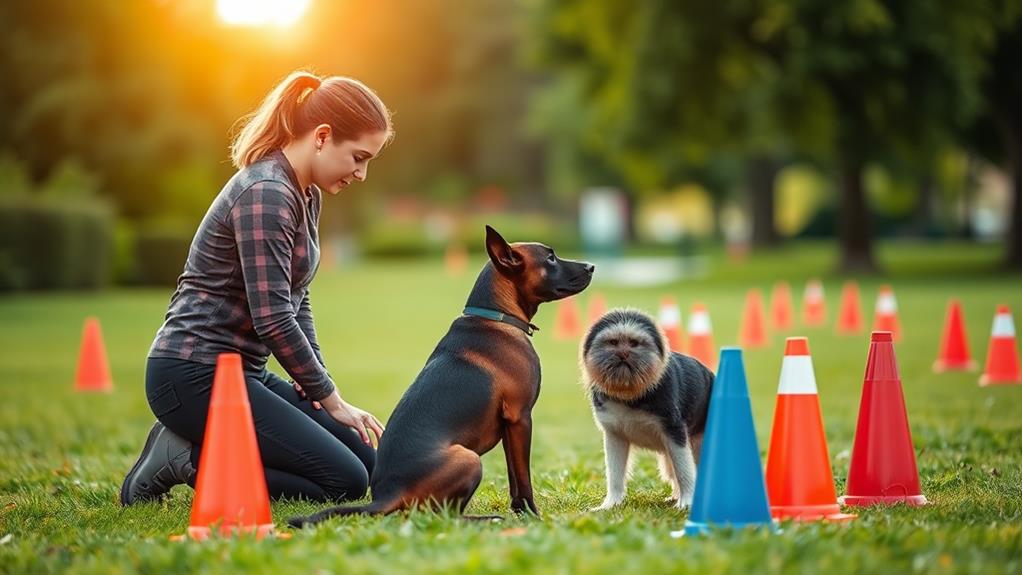
Training your dog takes time, and it's important to stick with it even when progress feels slow. You might feel frustrated when your dog doesn't seem to grasp commands right away, but remember that every dog learns at their own pace. Consistency is key, so keep practicing the same commands and routines daily.
Patience is indispensable; your dog can sense your emotions. If you're feeling impatient, it can create anxiety for both you and your pup. Instead, celebrate small victories along the way. Each time your dog responds correctly, even if it's just a slight improvement, acknowledge it with praise.
Persistence is equally pivotal. If a method isn't working, don't be afraid to adjust your approach. Try different training techniques or tools, but don't give up on your dog. Regular short training sessions are more effective than longer, sporadic ones.
Lastly, remember that building a strong bond with your dog takes time. Your dedication will pay off, leading to a well-behaved companion. So take a deep breath, stay positive, and keep working together—you'll get there!
Frequently Asked Questions
What Age Is Best to Start Training My Puppy in Hindi?
You should start training your puppy as early as eight weeks old. At this age, they're most receptive to learning commands and socialization, so you'll set a strong foundation for their behavior and obedience.
Can I Train My Dog Using Only Hand Signals?
Absolutely, you can train your dog using only hand signals! Think of it like a silent movie; your pup can learn to understand your gestures with patience and consistency, creating a deeper bond between you both.
How Do I Correct Unwanted Behaviors in Hindi?
To correct unwanted behaviors, you'll need to stay consistent and patient. Use clear commands, reward good behavior, and redirect your dog when necessary. Consistency helps them understand what's expected, leading to lasting change.
Are There Specific Hindi Commands for Different Dog Breeds?
When it comes to dog training, different breeds respond better to specific commands. You'll find that using tailored Hindi commands can really hit the nail on the head, improving communication with your furry friend.
How Long Should Training Sessions Last Each Day?
Training sessions should last about 15 to 30 minutes each day. This length keeps your dog engaged without losing focus. Consistency's key, so make sure you practice regularly to reinforce what they've learned.
Conclusion
In dog training, remember that "patience is a virtue." By using simple commands, staying consistent, and employing positive reinforcement, you'll build a strong bond with your furry friend. Don't forget the importance of socialization; it helps your dog develop good behavior around others. With a little patience and persistence, you'll see great results. So, get started today and watch as your dog transforms into a well-mannered companion!

